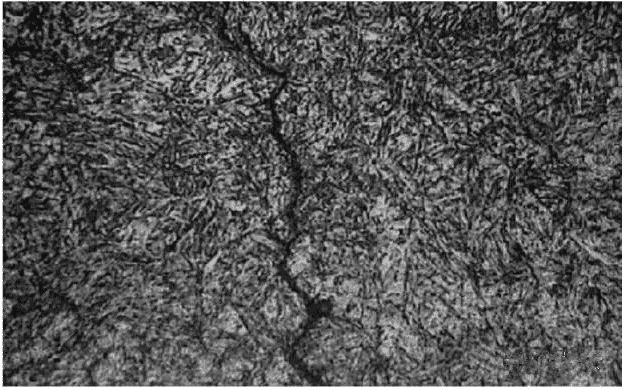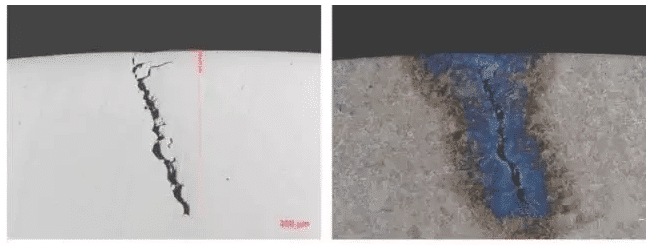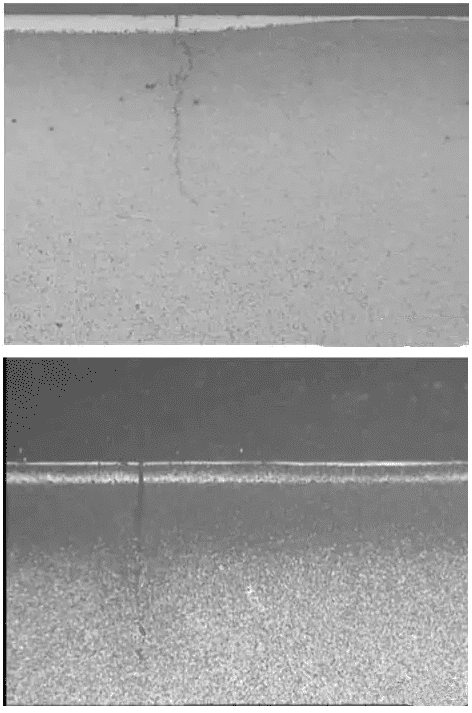Quenching crack is a common quenching defect, which is caused by many factors. Because the defects of heat treatment begin with product design, the work of preventing cracks should start with product design. It is necessary to select materials correctly and design structures rationally, put forward appropriate technical requirements for heat treatment, properly arrange technological route, select reasonable heating temperature, holding time, heating medium, cooling medium, cooling method and operation mode, etc.
Material aspect
1. Carbon is an important factor affecting quenching tendency. With the increase of carbon content, MS point decreases and quenching tendency increases. Therefore, under the condition of satisfying the basic properties such as hardness and strength, the lower carbon content should be chosen as far as possible to ensure that it is not easy to quench.
2. The influence of alloying elements on quenching tendency is mainly reflected in the influence on hardenability, MS point, grain size growth tendency and decarbonization. The alloying elements affect the tendency of quenching by influencing the hardenability. Generally speaking, the hardenability increases and the cracking ability increases, but when the hardenability increases, the quenching medium with weak cooling ability can be used to reduce the quenching deformation to prevent the deformation and cracking of complex parts. Therefore, for complex parts, in order to avoid quenching cracks, it is a better scheme to select steel with good hardenability and use quenching medium with weak cooling capacity.
Generally speaking, the lower the MS, the greater the tendency of quenching. When the MS point is high, the martensite formed by transformation may be self-tempered immediately, thus eliminating part of the transformation stress and avoiding the occurrence of quenching. Therefore, when the carbon content is determined, a small amount of alloying elements should be selected, or steel grades containing elements which have little influence on MS point should be selected.
3. Superheat sensitivity should be considered when selecting steel. Overheat sensitive steel is prone to cracks, so attention should be paid to the selection of materials.
Structural Design of Parts
1. Uniform cross-section size.
Cracks occur in parts with sharply varying cross-section size due to internal stress during heat treatment. Therefore, the sudden change of section size should be avoided as far as possible in design. The wall thickness should be uniform. If necessary, openings may be made in thick-walled parts which have no direct relationship with the use. Holes should be made through as much as possible. For parts with different thicknesses, separate design can be carried out, and then assembled after heat treatment.
2. Round corner transition.
When the parts have edges, sharp corners, grooves and transverse holes, these parts are prone to stress concentration, leading to parts quenching. For this reason, parts should be designed as far as possible to avoid stress concentration, and processed into rounded corners at sharp corners and steps.
3. The difference of cooling rate caused by shape factor.
The cooling speed of parts during quenching varies with the shape of parts. Even in different parts of the same part, the cooling rate varies due to various factors. Therefore, excessive cooling differences should be avoided to prevent quenching cracks.
Technical Conditions for Heat Treatment
1. Use local quenching or surface hardening as far as possible.
2. To adjust the local hardness of quenched parts reasonably according to the requirement of service conditions of parts. When the local quenching hardness requirement is low, try not to force the overall hardness to be the same.
3. Pay attention to the quality effect of steel.
4. Avoid tempering in the first kind of tempering brittle zone.
5. Reasonable arrangement of process route and process parameters: Once the material, structure and technical conditions of steel parts are determined, the heat treatment technicians will carry out process analysis to determine a reasonable process route, that is, to correctly arrange the position of preparation heat treatment, cold processing and hot processing and determine the heating parameters.
Quenching Crack
At 1,500X, the crack is serrated, the crack at the beginning is wide, and the fracture lines at the end are small to none.

2. Microscopic analysis: abnormal metallurgical inclusions, crack morphology is zigzag extension; after corrosion with 4% nitric acid alcohol, there is no decarbonization phenomenon, the microscopic morphology is shown in the following figure:

1 # Sample
No abnormal metallurgical inclusions and decarbonization were found in the cracks. The cracks extend in zigzag shape and have the typical characteristics of quenching cracks.

2 # Samples
Analytical conclusions:
1. The composition of the sample meets the requirements of the standard and corresponds to the original furnace number.
2. According to the microscopic analysis, no abnormal metallurgical inclusions and decarbonization were found at the cracks of the samples. The cracks extend in zigzag shape and have the typical characteristics of quenching cracks.
Forging cracks
1. Cracks caused by typical material causes, with oxide edges.
- Microscopic observation

- Microscopic observation

The surface white bright layer should be secondary quenched layer, and the deep black layer under secondary quenched layer should be high temperature tempered layer.
It is concluded that cracks with decarburization need to be distinguished from raw material cracks. Generally, the forging cracks whose decarburization depth is greater than or equal to surface decarburization depth are raw material cracks, and the forging cracks whose decarburization depth is less than surface decarburization depth.









